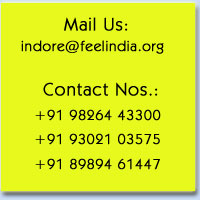Must know About Bhutan
|
ALL ABOUT KINGDOM OF BHUTAN Purely Buddhist Himalayan Kingdom has unsurpassed scenic majesty and vibrant culture. The kingdom is still regarded as one of the last Shangrl-la’s in the Himalayan region and is living heritage of Buddhism. Sandwiched in the Himalayas between India, Nepal and the Tibet region of China, shares the world’s greatest mountains which makes it an exotic tourist destination. The Bhutanese have safeguarded their ancient way of life, beautiful Dzongs, temples and houses with architecture found nowhere else in the world, which adds up to the call to Bhutan. Thimphu is the capital city & Paro which is at a 2 hours drive from Thimphu is the only airport in the country. Phuentsholing is an Indo-Bhutan border town and is one of the entry point to Bhutan by surface from India. |
||||||||||||||||||||||||||||||||||||||||||||||||||||||||||||||||||
|
||||||||||||||||||||||||||||||||||||||||||||||||||||||||||||||||||
| Best time to travel: Bhutan has four distinct season, spring, monsoon, autumn and winter. Spring and autumn is the best time to visit Bhutan i.e. end of Febraury till end of March and September to November. If you love flowers, you will get plenty of them in May, June and July. November, December, January and February will be blessed with breath taking mountain views, sunny days and the morning/evening chills. National Emblem: The National emblem, contained in a circle, is composed of a double diamond thunderbolt placed above a lotus, surmounted by a jewel & framed by two dragons. The double diamond thunderbolt represents the harmony between secular & religious power; which results from the Buddhist religion in its Vajrayana form. The lotus simbolises purity; the jewel – sovereign power; & the two dragons a male & female stand for the name of the country-the thunder dragon (Druk Yul). National Flag: The national flag is rectangular & divided into two parts with a white dragon in the middle. The upper yellow half signifies the country’s secular authority of the King & the lower saffron-orange half signifies the religious practice & spiritual power of Buddhism. National Symbols: National Tree : Cyprus (Cupresses Corneyana). National Flower : Blue Poppy (Mecanopsis Grandis). National Animal : Takin (Budorcas Taxicolor). National Bird : Raven (Corvus Corax Tibetanus). National Day: National day is celebrated on 17th of December in commemoration of the accession of Gogsar Ughen Wangchuk, the first king of Bhutan to the throne in 1907, in Punakha Dzong. People: Bhutanese are friendly & hospitable people. The large majority of Bhutanese people are a homogeneous group divided linguistically into three broad sub-groups. These are Sharchops, Ngalong & Lhotshampa. Currency: Ngultrum, the currency of Bhutan, has the same value as Indian rupee, which is also a legal tender. Food: Staple diet is red rice, buck-wheat, wheat, maize, pork, beef, chicken, yak meat, cheese & chilies (taken as vegetable – not as spice). Arts & Crafts: Bhutan is known for handicraft items in bronze, silver & other metals. Sculpting of religious figures is widely practiced & every temple, houses are large brightly painted & gilded statues of the Buddha & other saints. Dress: Bhutanese men wear “Gho”, which are longish robes tied around the waist by a cloth belt known as “Kera”. The women’s ankle-length dress is known as “Kira”, which is made of bright colored fine woven fabric with traditional patterns. Sports: The national sport of Bhutan is archery. Other traditional sports include Digor-a kind of shot put, darts, & wrestling. Architecture: The castle-like Dzongs, with their gently tapering walls classic lines, large courtyards & beautiful galleries, are among the finest examples of Bhutanese architecture. Living Culture: In almost every Dzongs (fortresses that house both the monastic & the Govt. administrative wings) there is an annual traditional festival (tsechus) that normally spans 3-4 days. Colorful & well choreographed mask dances are performed during the tsechus. Due to the nature of the lunar calendar, exact dates for tsechus vary from year to year |
||||||||||||||||||||||||||||||||||||||||||||||||||||||||||||||||||
GETTING TO BHUTAN By Air: |
||||||||||||||||||||||||||||||||||||||||||||||||||||||||||||||||||
DISTANCE CHART WITH TRAVEL TIME
|
||||||||||||||||||||||||||||||||||||||||||||||||||||||||||||||||||
ENTRY FORMALITIES FOR INDIAN TOURISTIndian Tourist traveling to Bhutan does not require any visa. However they need a travel Permit to visit Bhutan.
Travel Documents Required With Presence of the Guest:
Entering Bhutan by Flight: While collecting your airlines boarding pass you are given 02 forms at Druk air counter.
Exiting Bhutan by Flight: While collecting your airlines boarding pass you are given 02 forms at the Druk air counter.
Notes:
Entering Bhutan by Surface:
Exiting Bhutan by Surface: |

